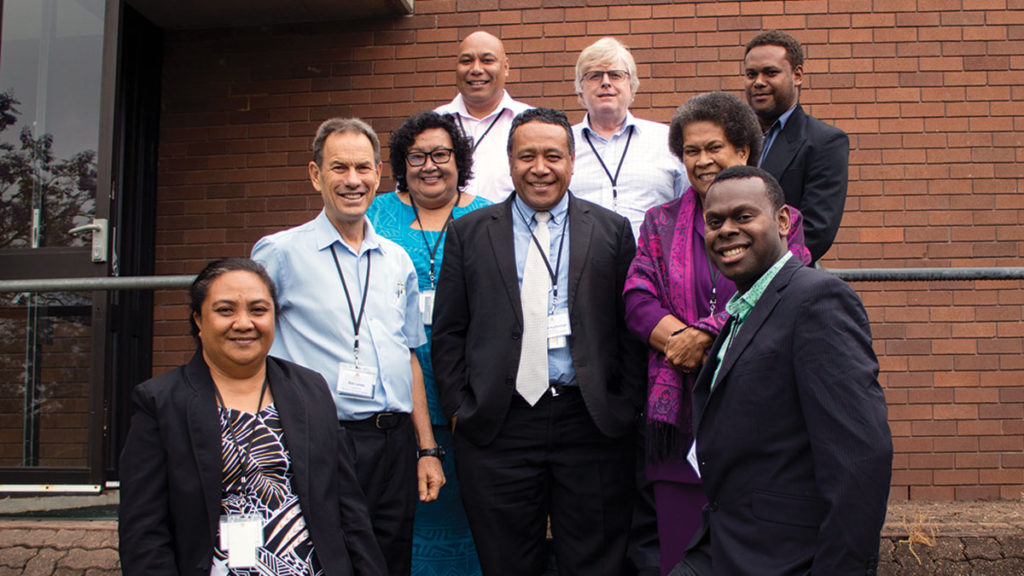In the northern summer of 1919—100 years ago this month—a seemingly small group of Adventist Church leaders, Bible teachers and history teachers met officially and unofficially over a period of six weeks at the Church’s headquarters in suburban Takoma Park, Maryland. The 1919 Bible Conference—as it is generally referred to, despite having a longer official name—marked a significant moment in Adventist Church history. By virtue of its outcomes and non-outcomes, it would be largely forgotten for decades but would come to be regarded as a still more significant occasion.
The wider world was shaken by the tragedy of the Great War—of course, it wouldn’t be World War I until another world war some 20 years later—and the Adventists, along with other Christian groups, were reassessing their disappointed predictions that this war would herald the second coming. Their prophetic fervour was dissipating as the war subsided into a sullen peace. Particularly in the United States, much Christian attention was turning to the perceived threats represented in new scientific discoveries, a changing society and the threat of biblical higher criticism. Many Christian voices resorted to a scientific-type response that insisted on certain fundamental doctrines that increasingly narrowly defined orthodoxy and polarised believers. Ironically but perhaps unsurprisingly, what become known as fundamentalism was a distinctly modernist response to the challenges of modernism.
As much as the Adventists saw themselves as peculiar, they were not immune from these external pressures, which added to their sense of loss and their growing questions in the wake of the death of Ellen White in 1915. Few of the Adventist pioneers of the first and second generations of the Church remained, but—for the first time—the loss of their living prophet left the Church feeling the absence of what they regarded as their safety net.
What happened in 1919
The Bible Conference in 1919 covered a variety of biblical, prophetic interpretation and Church issues, but all these discussions kept coming back to two key and interrelated questions: “All of the issues discussed . . . revolved in some way or another around the twin issues of how to interpret the Bible and Ellen White’s writing.”1
This, of course, was also the key question of fundamentalism: is the Bible inerrant and/or infallible? And what do we do when other evidence, such as that discovered by science and historical research, seems to conflict with the Bible? The Adventist complications included where Ellen White’s writing and her inspiration fitted in relation to the Bible and even whether she should be regarded as inerrant.
Much of the discussion at the Bible Conference was led by long-serving General Conference president A G Daniells and Adventist scholar W W Prescott, both of whom had worked extensively with Ellen White. They urged a more nuanced use of Ellen White’s writings, the supremacy of the Bible, and an openness to growing in our understanding of how we read the Bible and engage with the society around us. There was much debate and strong opposition. Michael Campbell argues that this was the first time that Adventist “progressives” and “conservatives” were so strongly polarised.2 [pullquote]
By virtue of their personal knowledge and experience of Ellen White and the related topics, Daniells and Prescott largely carried the day at the conference itself and in the meetings that continued over the following three weeks. But—and this is the one of the biggest buts in Adventist history—they lacked the confidence to lead the Church on to firmer ground. Concerned for the challenge these broader understandings would pose to now-established Adventist tradition, the perceived risk that these conclusions would further undermine the shaken confidence of many in the Church, the pressures toward fundamentalism in the religious culture around them, and the growing political pressure Daniells was under as General Conference president from conservative voices within the Church, the 1919 conference decided not to publish its conclusions. The transcripts of the Bible Conference discussions were placed in the Church’s archives and not re-discovered until the 1970s.
The late historian Ben McArthur described this decision as one of the greatest failings of Daniells’ career: “Adventism was at a crossroad in 1919. Daniells came within an inch of being a transformational leader. But instead of insisting on the narrow path of difficult self-examination, he allowed the Church to turn onto the boulevard of doctrinal complacency.”3
Fundamentalist Adventism?
Among the various landmark dates in Adventist theological history—1844, 1863, 1888, 1957, 1980, perhaps 2015—1919 is among the most important. Some conservative voices in Adventism still urge that Adventism lost some of its distinctive theological voice with the publication of Questions on Doctrine in 1957. But a better reading is that Adventism lost its distinctive progressive voice in 1919 (or perhaps she really fell silent in 1915 and the Church merely institutionalised that in 1919) and, prompted again by external religious and social forces, we began to regain our voice in 1957, with much work still to be done.
This is charted in quite practical ways by Zdravko Plantak in The Silent Church. For example, he plots the steep decline of the number of women holding leadership positions in the Adventist Church in North America from 1915—the year in which there was the highest number of women in such roles—to 1960, by which time all of the key numbers were zero.4 This is not the sum of this theological shift, but it is a measurable symptom of a Church that became shaped more by its surrounding culture and society than its pioneering heritage and message.
The Bible—and the writings of Ellen White—came to be read more narrowly, and with continuing confusion as to how these two inspired sources should relate to one another and be best read in conjunction. That the testimonies of the 1919 conference participants were misplaced for more than 50 years only added to the jolt to this sense of complacency when they were rediscovered.
Back to 1919
There is no way back to 1919, but we must be prepared to learn from our history and be open to reconsidering some of the missteps of our past. At a conference of Adventist historians last year, Andrews University professor of church history Nicholas Miller argued that “Seventh-day Adventists are not fundamentalists.”5 But his primary appeal was to the Adventist pioneers, rather than to our more recent history. Even if Adventism has never fully embraced fundamentalism, too often we have thought and acted like we did.
While the assessment by 1919 Bible Conference participant G B Thompson seems too simplistic, there is truth to it—and perhaps more so, given the intervening 100 years of assumptions, traditions and institutionalising. Referring to the place of Ellen White’s writings in the beliefs and life of the Church, he urged, “If we had always taught the truth on this question, we would not have any trouble or shock in the denomination now.”6
We cannot go back, but we do have the opportunity—and the calling—to go forward. After all, this is what it means to be Adventist.







